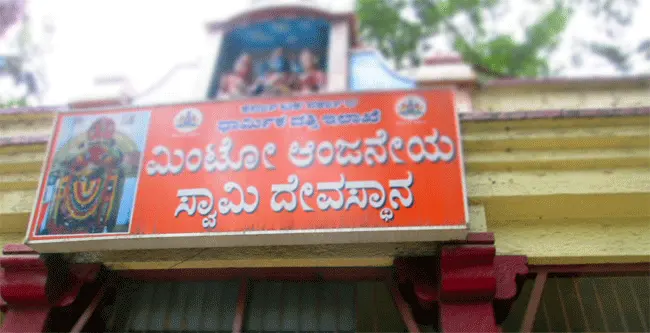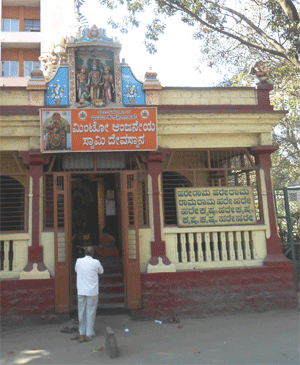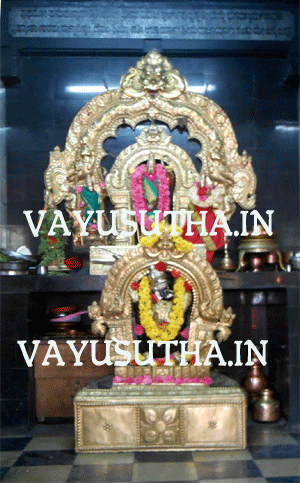
Bangalore fort and Victoria Hospital
The Bangalore fort was the seat of the rulers of Bangalore till Tipu Sultan. After the fall of Tipu Sultan to the English, the fort received no attention from the British for strategic reasons. The Victoria Hospital was planned and built inside the Bangalore fort by the British. The foundation stone for the hospital was laid on 22nd June 1897 by Her Highness Kempananjammani, the then Maharani regent of Mysore to commemorate the completion of 60 years of reign of Queen Victoria. The Hospital named after Victoria was then formally inaugurated on 8th December 1900 by Lord Curzon the then Viceroy of India. It started as a health centre with 140 beds strength which is now the second largest Hospital in India accommodating more than 1000 patients at a time. It is located in the hub of the city and is easily accessible. This is a teaching hospital and is attached to Bangalore Medical College and Research Institute, which is one of the premier Medical Colleges of India.
Minto Eye Hospital of Bangalore
The Minto Hospital was started as a small dispensary in Chickpet in 1896. It grew to give better service and was moved to its present place at Chamarajpet in 1913 as a hundred-bed hospital. The hospital was upgraded with 300 beds in the year 1994 and now has a Cornea Grafting Centre.
Chamarajpet
During the last decade of the 19th century, the old towns of Bangalore began to outgrow. Sprawling new extensions started coming up. Chamarajpet was one of the first extensions to be laid. This well-planned layout west of Tipu’s Palace, lies between Basavanagudi and KR market.
The development of the area started in 1892 and was completed in two years. The layout was named Chamarajendra Pete, in memory of Chamarajendra Wodeyar, who died on December 28, 1894. Over the years, Chamarajendra Pet was abbreviated to Chamarajpet.
According to the 1920 Campbell’s Directory of Mysore and Bangalore, the Chamarajpet Extension is conveniently divided into five Main streets parallel to each other and open to nine crossroads. Each of the main roads has a distinct name. The first main, Albert Victor Road, was named after the visit of Prince Albert Victor - son of Queen Victoria - in 1899. The road was later named Alur Venkatrao Road. The second main road is named Anjaneya Temple Road, the third Main Road is named Rameshwara Temple Road, the fourth main road is named Central Bank Road and the fifth Main Road is named Puttana Chetty Road.
Anjaneya of the fort area
 When the city was leased to the Mysore King Chikkadevaraya by the Mughals in 1689, he expanded the existing main fort to the South and built the Sri Venkataramana temple within its boundaries. An Anjaneya temple was in existence adjacent to Tipu’s summer palace and near Sri Venkataramana temple. It can be observed from the above that the second main road of Chamarajpet was named Anjaneya Temple Road during the last decade of the nineteenth century itself. From this, the antiquity of the present Anjaneya Temple just opposite the present-day Minto Eye Hospital can be judged.
When the city was leased to the Mysore King Chikkadevaraya by the Mughals in 1689, he expanded the existing main fort to the South and built the Sri Venkataramana temple within its boundaries. An Anjaneya temple was in existence adjacent to Tipu’s summer palace and near Sri Venkataramana temple. It can be observed from the above that the second main road of Chamarajpet was named Anjaneya Temple Road during the last decade of the nineteenth century itself. From this, the antiquity of the present Anjaneya Temple just opposite the present-day Minto Eye Hospital can be judged.
Temple opposite to Minto Eye Hospital
This beautiful temple for Sri Anjaneya exists just opposite Minto Eye Hospital in Chamarajpet. The temple is to the west of Tipu’s palace. The old name of this area is Sultanpet.
The temple faces the Minto eye hospital and many people visit this temple before and after visiting the eye hospital Sri Anjaneya Swamy of this temple is known popularly as ‘kannaspathre Anjaneya’. There are visits by regular devotees from the Chamarajpet and a few of them visit the temple with their entire family.
While the Eye Hospital was taken up for construction in the fort area, an Anjaneya vigraha was founded by one Sri Sonnappan. He had placed the deity under a thatched shed nearby and worshiped, thus began this temple.
The Legend of Sri Anjaneya Temple
While the Eye Hospital was taken up for construction in the fort area, an Anjaneya vigraha was founded by one Sri Sonnappan. He had placed the deity under a thatched shed nearby and worshiped. During these days Sri Vitaladasacharya follower of Sri Admaru mutt of Udipi visited Mantralaya to offer prayers to Sri Raghavendra. After a few days of his prayers in this kshetra, he was given a divine direction by Sri Guru Raghavendra to go to Bengaluru and worship Sri Mukhyaprana devaru. He had the darshan of the deity Sri Mukhyaprana Devaru also. He left for Bengaluru and stayed in a dharmashala near the railway station which is known as “Thodathappa chultry”. But did not know how to find the deity of Sri Anjaneya as directed by Sri Gurugalu. One fine day somebody who had come to stay in the dharmasala asked if he could accompany him to a place where a deity of Sri Anjaneya is without regular pooja. Sri Vitaladasacharya accompanied the stranger to the place opposite the Minto Eye Hospital. To the surprise of the Pundit, the deity of Sri Mukhyaprana Devaru was the same as that of the one he had darshan in the dream at Mantralaya. He started the worship of the deity as per the practice of Madhwa practice. The deity which was in the ground level was put on the platform with the help of the merchants nearby. Slowly the patronage for the deity grew so also the infrastructure of the temple.
 Sir Mirza Muhammad Ismail, Diwan of Mysore had made the present structure of the temple with stone and cement. The merchants from nearby had built the gopuram for the deity, and Sri Madhawarao had presented the temple bell.
Sir Mirza Muhammad Ismail, Diwan of Mysore had made the present structure of the temple with stone and cement. The merchants from nearby had built the gopuram for the deity, and Sri Madhawarao had presented the temple bell.
Almost all the leaders of the freedom movement like Nehru, Rajaji, Babu Rajendra Prasad, and Lord Mountbatten had visited this temple.
Sri Anjaneya of this kshetra
The deity of this kshetra is seen with prabavali and is made of a single stone. Sri Anjaneya is facing north and is seen walking towards the west. His lotus feet are adorned with thandai and nupur. The left foot is in front and the right foot is slightly raised. Akshayakumar is pressed below the Lord’s feet. He is wearing a kacham which is holding the thighs lightly. On the hip, He is wearing ornamentally worked chains. His bosom is adorned with two long chains of which one has a pendent. He is wearing a decorated mala close to the neck. He is wearing yagyopavetham. His left-hand adorning bracelet is seen resting on the left hip and holding the steam of the sowgandika flower. The flower is seen above His left shoulder. He comforts the devotees with His right hand in ‘abhaya mudra’. The longulam [tail] of the Lord gracefully takes a curve and rises above His head. The tail ends with a curve adorned with a small beautiful bell. Lord is wearing ear studs and His kesam is neatly tied. In His head, the Lord is adorning an ornamental ‘kesa-bandh’. His eyes are glowing and pleasing.
Pooja and festivals of this kshetra
Poojas are conducted as per madhwa sampradaya, hari vayu stuthi parayana is made while abishekam is performed to the deity. During the months of Sravana, Karthika, and Danur special poojas are conducted. Sri Hanumath Jayanthi is conducted during the month of Markazi. Sri Rama Navami is celebrated on a grand scale during the month of Chitra.
Location of the temple: Kannaspathre Anjaneya Temple, Minto Eye Hospital, Bengaluru"
Experience
Stand in front of this deity with folded hands, feel and experience ‘niSabd’ [निशब्द], and the grace of the almighty engulfing your heart.
SRI HANUMAN THINKS DIFFERENTLY, THINKS FAST
THINKS AHEAD AND ACTS FOR SURE
Ed [June/July 2015]
Updates: [Jan 2025]
